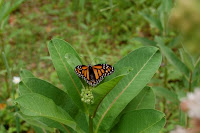Stop by and say "hi" to two of our Steering Committee members on Saturday, June 13 at Green Day Celebration and Summit. Kim and Lucille will have a table with information about The NPC and are looking forward to talking about native plants with you.
Bronxville, Eastchester and Tuckahoe are sponsoring the event at Eastchester Town Hall located at 40 Mill Road, Eastchester, NY 10709
The event is free and will be held Rain or Shine from 10 a.m. to 4 p.m. Various tents will be set up and other indoor events include educational demonstrations and exhibits for your enjoyment.
Bring your own re-usable mug for a free cup of coffee.
There will be a performance by world-renowned Solar Punch the all solar-powered folk rock band. You'll also enjoy the Musical Munchkins, SHA!Capella, Annie and the Natural Wonder Band and Kristina Con Vita.
Bronxville, Eastchester and Tuckahoe are sponsoring the event at Eastchester Town Hall located at 40 Mill Road, Eastchester, NY 10709
The event is free and will be held Rain or Shine from 10 a.m. to 4 p.m. Various tents will be set up and other indoor events include educational demonstrations and exhibits for your enjoyment.
Bring your own re-usable mug for a free cup of coffee.
There will be a performance by world-renowned Solar Punch the all solar-powered folk rock band. You'll also enjoy the Musical Munchkins, SHA!Capella, Annie and the Natural Wonder Band and Kristina Con Vita.





































 Last Thursday the lawn was mowed! Yesterday, one of our many devoted volunteers -Annie, delivered the wagons.
Last Thursday the lawn was mowed! Yesterday, one of our many devoted volunteers -Annie, delivered the wagons.









 What's the best way to entice a novice to learn about native plants? This is what I asked myself as I embarked on the task of creating this "
What's the best way to entice a novice to learn about native plants? This is what I asked myself as I embarked on the task of creating this "